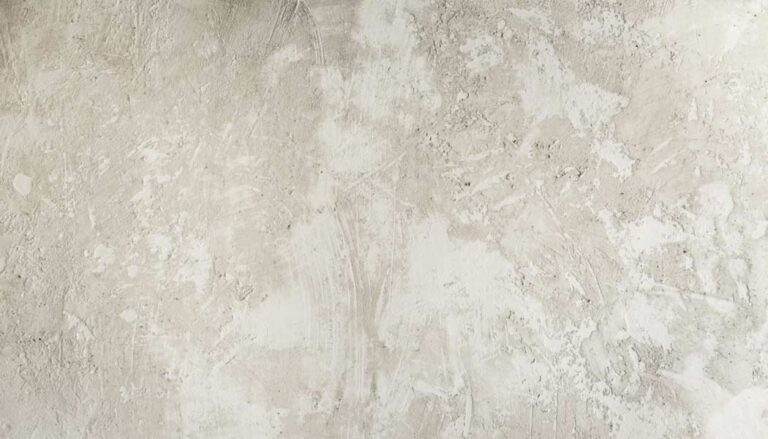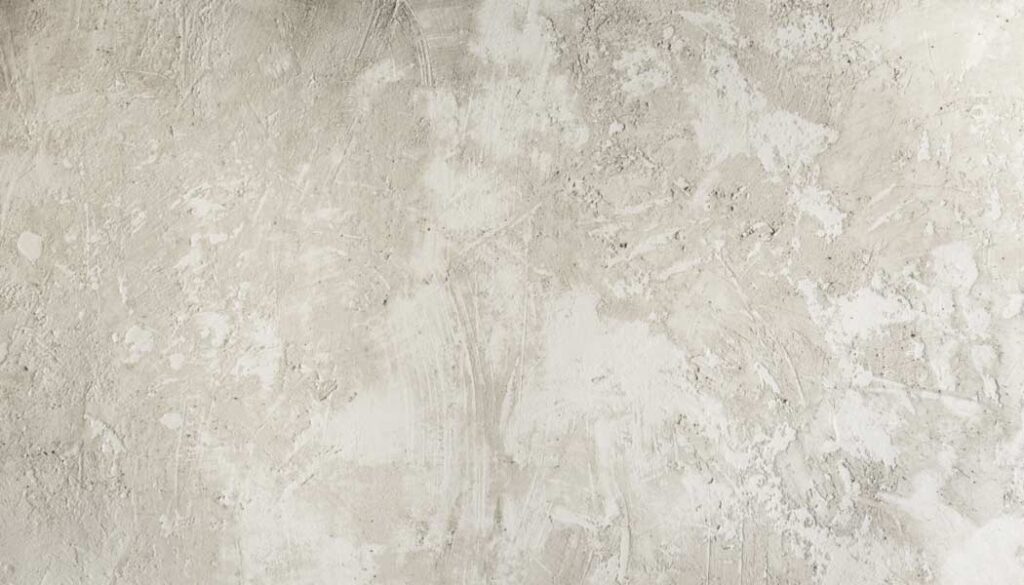
Can You Paint Over Limewash? – Learn How to Do It
Limewash is a centuries-old technique used for painting walls and surfaces with a coating produced from slaked lime, water, and natural pigments. It is a popular choice for adding a natural, textured look to interior and exterior walls.
However, as trends and preferences change, it is not uncommon for homeowners to want to update the look of their limewashed walls. This often raises the question: can you paint over limewash?
You can paint over limewash. Some specific steps should be taken as the preparation. Right primer and paint is important when you plan to paint over limewash.

In this article, we will explore whether it is feasible to paint over limewash and what steps to take to ensure proper adhesion. Additionally, we will discuss other factors to consider before making a decision regarding painting over limewash.
Can You Paint Over Limewash?
Yes, it is okay to paint over limewash. Limewash is a traditional paint that is made from lime, water, and pigment. It has a unique, matte, and textured appearance that can be attractive in certain situations.
However, over time, limewash can become discolored or worn. Also, note that it is not as durable or washable as modern paints. This is why some people choose to paint over limewash to refresh the look of their walls. Also, it helps to improve their durability and washability.
Painting over limewash can be a good option if you want to update the look of your walls without completely removing the existing paint. It allows you to change the color and finish of the walls, and it can provide better protection against wear and tear. Additionally, modern paints can be more resistant to mold, mildew, and water damage, which can be important if you live in a humid environment.
However, there are also some potential downsides to painting over limewash. For one, limewash is a breathable paint that allows the walls to “breathe” and release moisture. By painting over it with a modern paint, you may be sealing the walls and preventing them from breathing. This can finally lead to problems with mold or mildew. Additionally, limewash can have a unique character that some people may want to preserve, and painting over it could diminish this character.
In a nutshell, while it is possible to paint over limewash, it is important to consider the pros and cons before making the decision. If you do choose to paint over limewash, proper preparation is key to ensure a smooth and durable finish.
How Does Limewash Affect Normal Paint?
Limewash and normal paint are two different types of coatings that have different properties and characteristics. As such, they can affect each other in several ways depending on the specific conditions and circumstances.
In general, applying limewash over normal paint is not recommended. It can cause adhesion problems and result in a patchy, uneven finish. This is because limewash is a breathable coating that penetrates the surface of the substrate and bonds with the underlying material.
On the other hand, paint creates a film on top of the surface and seals it off from moisture and air. If limewash is applied over paint, it may not be able to penetrate and bond properly, leading to adhesion issues and poor performance.
Applying normal paint over limewash may also cause problems, as the porous nature of the limewash can affect the adhesion, and durability. Additionally, the high alkalinity of the lime can react with certain types of paints and cause discoloration or other issues.
Therefore, if you are considering using limewash and normal paint together, it is important to consult with a professional. Follow the manufacturer’s instructions carefully to ensure that the coatings are compatible and applied correctly.
Also Read: How to paint laminate walls?
What Primer to Use over Limewash?
When using limewash on a surface, select a primer that is compatible with lime-based coatings. A primer that is designed for use with acidic materials may not adhere well to a limewashed surface. Here are a few options for primers to use over limewash.
Lime-compatible primer: Look for a primer that is designed for lime-based coatings. These primers are formulated to work with the alkaline properties of limewash and will provide a good base for additional coats of paint or sealer.
Acrylic primer: An acrylic primer can also be used over limewash, as long as it is labeled as being suitable for use on alkaline surfaces. Acrylic primers are widely available and can be applied with a brush, roller, or sprayer.
Oil-based primer: You can use oil-based primer over limewash. Oil-based primers tend to be more durable than water-based alternatives, so they are a good choice for high-traffic areas.
How to Paint over Limewash?
Painting over limewash requires proper preparation of the surface to ensure that the new paint adheres well. Here is a detailed step-by-step guide on how to paint over limewash surface.
Materials You Need:
- Painter’s tape
- Plastic sheeting
- Drop cloth
- Sandpaper (medium-grit)
- Tack cloth
- Primer
- Paint
- Paintbrush or roller
Step 1: Clean the Surface
Use a soft-bristled brush to remove any loose or flaking limewash. Next, clean the surface with a mixture of warm water and mild detergent, using a scrub brush. Rinse with water and let it dry completely.
Step 2: Protect Surrounding Areas
Cover any areas you do not want to paint, like trims, windows, and door frames, with painter’s tape and plastic sheeting. Place a drop cloth on the floor.
Step 3: Sand the Surface
Use medium-grit sandpaper to sand the limewash surface lightly. This will help remove any residue and smooth out any rough areas. Be sure to remove any sanding dust with a tack cloth.
Step 4: Apply Primer
After the surface has been cleaned and sanded, use primer, one coat first. Choose a primer specifically designed for porous surfaces like limewash. Using a brush or roller, apply the primer evenly across the surface. Allow it to dry according to the manufacturer’s instructions.
Step 5: Paint the Surface
Wait until the primer is dried entirely. And then, you will need to apply a paint that you have chosen already for the selected surface. Use a brush or a suitable roller for the surface. Paint the surface in a way so that every part of the surface gets painted completely. You may need to apply more coats to get the best results.
Following these steps will ensure that the new paint adheres properly to the limewash surface. Moreover, you will achieve a smooth and long-lasting finish.
Can You Paint over Limewash with Emulsion?
It is not recommended to paint over limewash with emulsion paint. It is because the limewash will not provide a good base for the emulsion to adhere to.
Limewash is a traditional coating made from natural materials, such as limestone, and it is highly porous and breathable. Emulsion paint, on the other hand, is a water-based paint. It contains synthetic materials, such as acrylic or vinyl, and it creates a non-porous surface.
If you try to paint over limewash with emulsion, the emulsion may not stick properly. It may peel or flake off over time. Additionally, emulsion paint will seal the limewash, which will prevent it from breathing and may cause the limewash to crack or peel.
Can You Paint over Limewash Brick?
Painting over limewash brick is a feasible option if you want to change the appearance of your brickwork. However, there are certain considerations to keep in mind before embarking on this endeavor.
Firstly, it’s essential to ensure that the limewash has cured entirely. This may take several weeks. If the limewash hasn’t cured completely, the paint may not adhere to the surface correctly.
Secondly, the brick should be cleaned thoroughly before painting. Any dust or dirt on the surface can interfere with the adhesion of the paint. Using a primer before painting can help to improve adhesion and ensure a smoother finish.
Thirdly, it’s essential to choose the right type of paint for painting brick that is compatible with both the limewash and the brick. This will ensure that the paint adheres correctly and provides a long-lasting finish.
Note: Painting over limewash will change the natural appearance of the brick. If you prefer the original look of the brick, it may be better to avoid painting over the limewash.
Limewash painting video:
Can You Paint over Limewash Render?
Limewash render can be painted over, but it is important to take some key factors into consideration. Limewash render allows for breathability, which means that it permits moisture to escape from the underlying material.
When painted with a non-breathable type of paint, the trapped moisture may result in dampness and mold. Therefore, it is necessary to select a breathable paint that is specifically designed for use on lime-based surfaces.
Another vital aspect to keep in mind is the preparation of the surface. This involves a thorough cleaning to remove all dirt and debris. Additionally, the surface should be completely dry before painting and any loose or flaking limewash must be removed.
A small and inconspicuous area must be tested with the paint. It will make ensure that it adheres properly to the limewash render without causing any moisture or other issues.
Final Thoughts
The decision to paint over limewash should not be taken lightly. It is a process that requires attention to detail and proper preparation in order to achieve the desired results. By carefully considering the pros and cons and taking the necessary steps, you can successfully paint over limewash. And finally, you can give your space a fresh, new look.
